Charles II olive oyster floral marquetry table
This accomplished Charles II marquetry table clearly bears the influence of Dutch and French masters of marquetry working in the last quarter of the 17th century, such as, Gerrit Jensen, Pierre Golle and Jan Van Meekeren. Golle, a Dutchman who moved to Paris to work for the court was at the forefront of richly inlaid designs of floral motifs and renowned for his marquetry of brass and tortoiseshell, made famous by his son-in-law André Charles Boulle. Golle’s son,Cornelius, emigrated after the Revocation of the Edict of Nantes (1685) and by 1689 was working with the London cabinetmaker Gerrit Jensen, supplying marquetry furniture in the latest Parisian taste to the court of William III and Mary II and Queen Anne.
In style Jensen’s furniture is consistently French in form, and particularly close to the work of Pierre Golle, Boulle’s famous predecessor. Golle’s will mentions a sum of money owed to Jensen for glue suggesting that close contact existed between the two masters. The catalyst here may well have been Golle’s brother-in-law, Daniel Marot, the Huguenot designer and engraver trained under Bérain, who left France before the Revocation of the Edict of Nantes, entering the service of William and Mary first in Holland and then in England. Marot’s engraved furniture designs show remarkable similarities with Jensen’s documented pieces in the Royal Collection, and others attributed to him at Boughton, Drayton and elsewhere. It is possible that Jensen had French craftsmen working for him: for instance, one Peter Berew, who signs a receipt on his behalf at Drayton in 1693. French terms, barely anglicized, occur constantly in the accounts, and indeed the ‘beuro’ or ‘scrutore’ (escritoire) with ‘drawers to stand on the top’ (otherwise known as the ‘caddinet’) may be a form which Jensen introduced to this country from France, together with the narrow gateleg table with a folding top.
Gerrit Jensen was one of the foremost cabinet-makers of his day and worked in London from his premises in St. Martin’s Lane. Jensen served the English crown since the reign of Charles II as the accounts of the Royal Household record a payment to him in 1680, for furniture which King Charles II commissioned as a royal gift for the King of Morocco. In 1689, Jensen was appointed royal cabinetmaker to King William III and Queen Mary – ‘Cabinet maker in Ordinary’ to the Crown; and he retained his royal appointment throughout the reign of Queen Anne, supplying furniture for St. James’s Palace, Hampton Court and Kensington Palace. In addition to the Royal family and the Dukes of Devonshire, Jensen also attracted commissions from senior members of the nobility, including the Dukes of Richmond, Hamilton, Montagu and Somerset, collaborating with other leading artists and craftsmen on the decoration of some of the greatest town and country houses in England. Jensen was one of several artist-craftsmen of foreign background employed at the English court, and his work shows a strong Continental influence, reflecting the fashionable French court styles of Pierre Golle, André Charles Boulle and Daniel Marot earning him the title ‘the English Boulle’.
Further stylistic and circumstantial evidence supporting the attribution to Gerrit Jensen in association with Pierre Golle, is in part from a number of tables with attribution to Jensen at Ham House, Chatsworth and Beningbrough Hall, an olive oyster cabinet on chest from Chatsworth House, a cushion mirror in the Boston Museum of Art, a further cushion mirror at Ham House, a cabinet in the Rijkesmuseum, an unattributed table in the V&A and a cabinet from Levens Hall. We also take a brief look into other collaborations and possibility’s in the royal collection. It should be noted like our example all legs to the aforementioned tables and the cabinet from Levens Hall, along with a table possibly commissioned by Charles II in the royal collection, share the distinctive barley or Solomonic twists, with decoration to the stretchers, excluding the example at Beningbrough Hall, which is on broken scroll legs and a table at Chatsworth House, which has broken S-scroll legs into carved gilt mask capitals, raised on carved gilt feet. The construction and use of materials on our table is plausibly ‘identical’ to that of the tables we have studied excluding that at the royal collection, as it does not have a drawer.
Condition
Of excellent original colour and surface, original handles, legs and stretcher, later bun feet. ‘Museum Condition’
Dimensions
H 28.5 in. x W 38.5 in. x D 36.5 in.
H 72.39 cm x W 97.79 cm x D 92.71 cm
Provenance
Nocton Hall, Lincoln
Comparable Tables
Auction Results
Lot 36, Sotheby’s Paris September 30th 2011 – A RED TORTOISESHELL, IVORY AND BONE INLAID AND FLORAL MARQUETRY TABLE, LOUIS XIV, CIRCA 1665, ATTRIBUTED TO PIERRE GOLE (http://www.sothebys.com/en/auctions/ecatalogue/2011/important-mobilier-sculptures-et-objets-dart-pf1111/lot.36.html)
Lot 130, Christies London July 6th 2000 – A GEORGE I WALNUT TABLE WITH CHARLES II MARQUETRY TOP
Possibly by Pierre Gole (https://www.christies.com/lotfinder/lot/a-george-i-walnut- table-with-charles-1834901-details.aspx?from=searchresults&intObjectID=1834901&sid=2c374e29-d9f5-4b96-9a56-b780a655e700)
Literature
A History Of English Furniture, By Percy MacQuoid, Page 148, plate XXII – Property of Lord Zouch of Haryngworth.
English Furniture 1660-1714 From Charles II to Queen Anne, By Adam Bowett – Page 60, Page 61 Plate 2:43 (1675-90), Page 116 Plate: 4:20 (1684), Page 117 Plate: 4:21, (1670-85), Page 118 Plate: 4:22 (1680).
Dictionary Of English Furniture Makers 1660-1840, Furniture History Society – Gole, Cornelius, page 348.
Dictionary Of English Furniture Makers 1660-1840, Furniture History Society – Jensen, Gerrit, page 485, 486, 487.
PREVIOUSLY SOLD

Queen Anne Fully Fitted Figured-Walnut Double Dome Bureau Bookcase
Queen Anne Fully Fitted Figured-Walnut Double Dome Bureau Bookcase 1702 to 1714 England SOLD Follow UsQueen Anne Fully Fitted Figured-Walnut Double Dome Bureau Bookcase A Queen Anne Fully Fitted Figured-Walnut Double Dome Bureau Bookcase,...
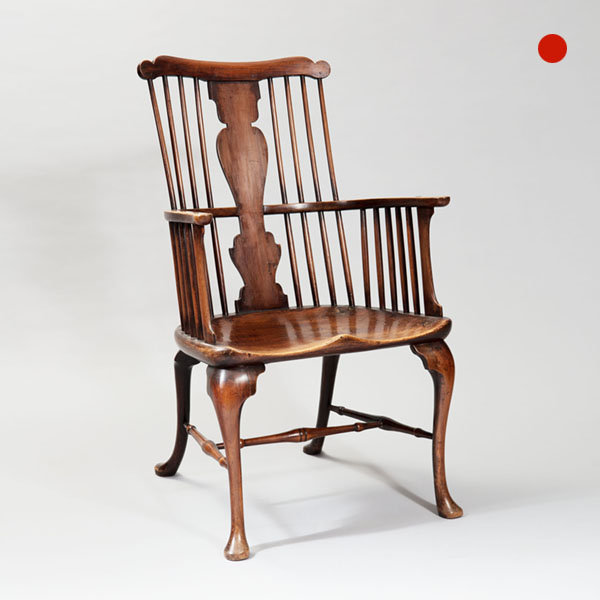
George III Walnut and Sycamore Comb-back Windsor Chair
The chair is of generous proportions having a large ‘saddle’ style seat carved from a single piece of walnut, surrounded by a gallery back, steam bent horseshoe armrest and solid cabriole legs.
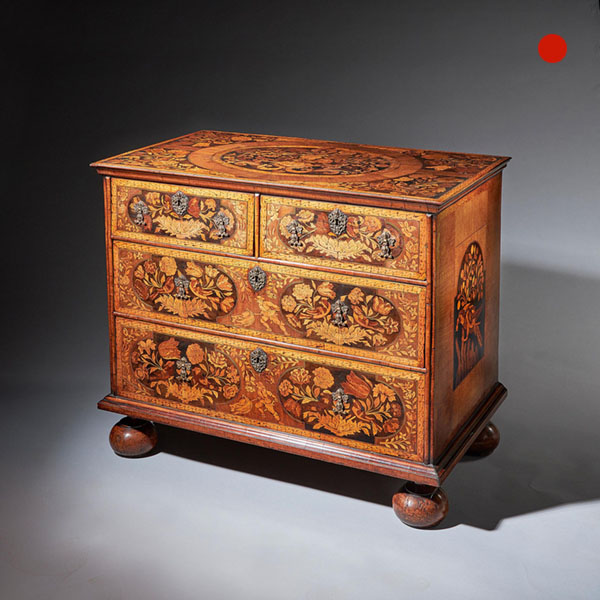
William and Mary Marquetry Chest of Drawers
A William and Mary walnut floral marquetry chest, circa 1690. The rectangular ogee moulded top with central banded oval inlaid with spring flowers, birds and scrolls of acanthus, on ebony ground.

Pair of George III Mahogany Chairs
A fabulous pair of George III mahogany chairs in original ‘country house’ condition. The carved cresting rail is decorated with sweeping softly carved acanthus leaves and centred by a cartouche.
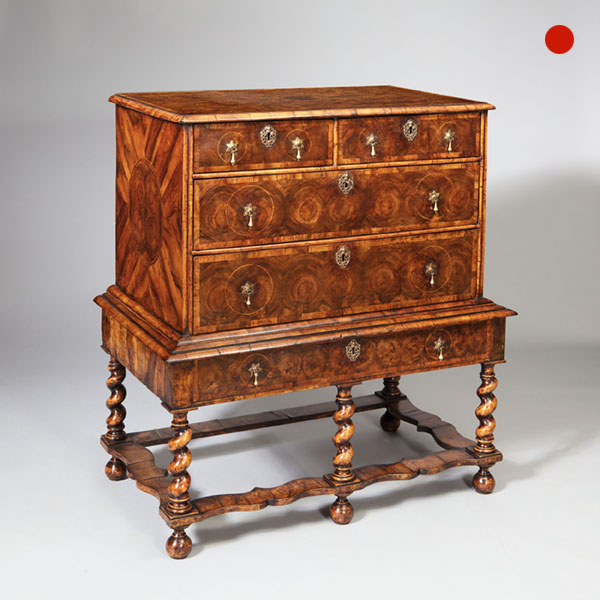
17th-Century William and Mary Olive Oyster Chest of Drawers on Stand
A superb example of well-chosen hand-cut olive oyster veneers, combined with the finesse of a highly skilled craftsman, from the reign of William & Mary (1689-1702).

George I Gilt Gesso Mirror
IMPORTANT DESIGN – A fine early 18th-century gilt gesso mirror of generous proportions retaining its original shaped and bevelled mirror plate. The frame expresses great freedom through its carving with scrolling leaves adorning the frame centred by an elaborate three-dimensional cartouche.

Queen Anne Fully Fitted Figured-Walnut Double Dome Bureau Bookcase
Queen Anne Fully Fitted Figured-Walnut Double Dome Bureau Bookcase 1702 to 1714 England SOLD Follow UsQueen Anne Fully Fitted Figured-Walnut Double Dome Bureau Bookcase A Queen Anne Fully Fitted Figured-Walnut Double Dome Bureau Bookcase,...

George III Walnut and Sycamore Comb-back Windsor Chair
The chair is of generous proportions having a large ‘saddle’ style seat carved from a single piece of walnut, surrounded by a gallery back, steam bent horseshoe armrest and solid cabriole legs.

William and Mary Marquetry Chest of Drawers
A William and Mary walnut floral marquetry chest, circa 1690. The rectangular ogee moulded top with central banded oval inlaid with spring flowers, birds and scrolls of acanthus, on ebony ground.

Pair of George III Mahogany Chairs
A fabulous pair of George III mahogany chairs in original ‘country house’ condition. The carved cresting rail is decorated with sweeping softly carved acanthus leaves and centred by a cartouche.

17th-Century William and Mary Olive Oyster Chest of Drawers on Stand
A superb example of well-chosen hand-cut olive oyster veneers, combined with the finesse of a highly skilled craftsman, from the reign of William & Mary (1689-1702).

George I Gilt Gesso Mirror
IMPORTANT DESIGN – A fine early 18th-century gilt gesso mirror of generous proportions retaining its original shaped and bevelled mirror plate. The frame expresses great freedom through its carving with scrolling leaves adorning the frame centred by an elaborate three-dimensional cartouche.
YOU MAY ALSO LIKE

17th Century William and Mary Olive Oyster Lace Box, Circa 1680-1700
17th Century William and Mary Olive Oyster Lace Box, Circa 1680-1700 £3,900Follow Us17th Century William and Mary Olive Oyster Lace Box, Circa 1680-1700 A fine and rare 17th-century William and Mary period olive oyster lace box of perfect...
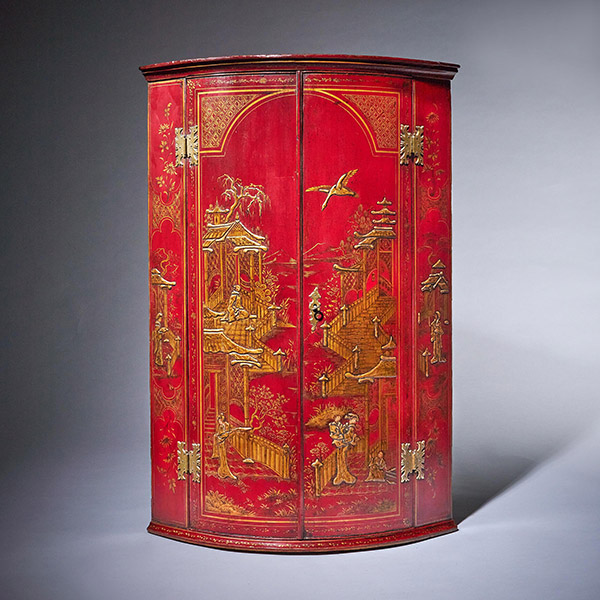
18th Century George II Scarlet-Red Japanned Corner Cupboard Att. Giles Grendey
18th Century George II Scarlet/Red Japanned Corner Cupboard, Att. Giles Grendey Follow Us18th Century George II Scarlet/Red Japanned Corner Cupboard, Att. Giles Grendey A fine and rare early 18th century George II scarlet japanned chinoiserie...
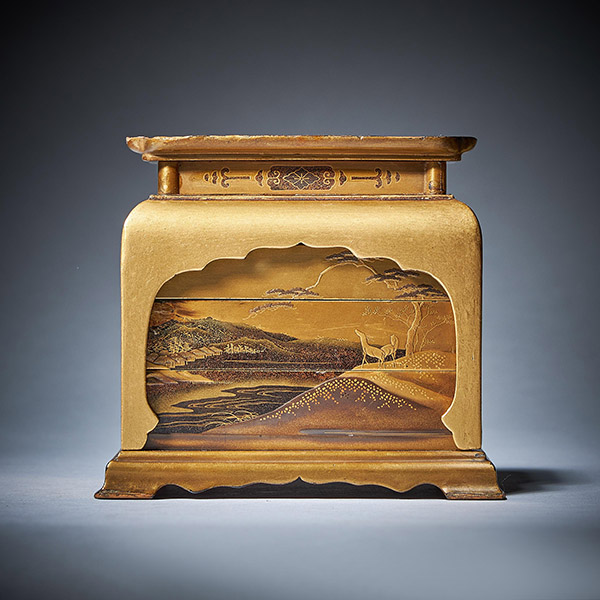
Signed Mid 19th C. Edo/Meiji Period Diminutive Lacquer Stacking Cabinet, Japan
Signed Mid 19th C. Edo/Meiji Period Diminutive Lacquer Stacking Cabinet, Japan £5,800Follow UsSigned Mid 19th C. Edo/Meiji Period Diminutive Lacquer Stacking Cabinet, Japan The highly decorated tray in the form of a table frames a series of...
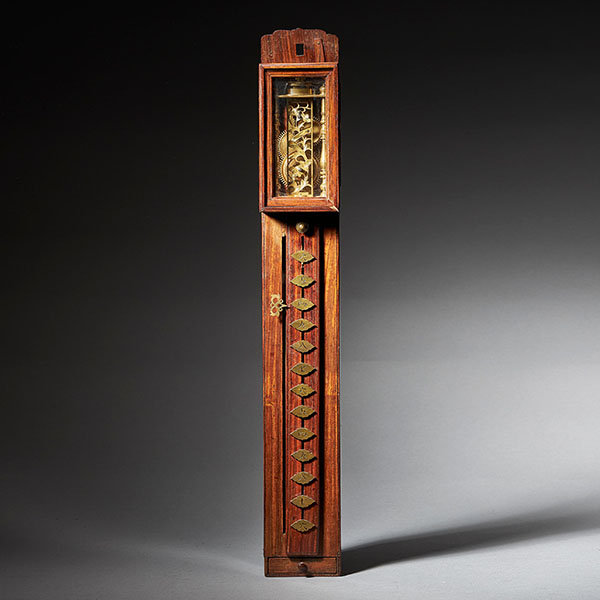
Late Edo Period 19th Century Japanese Pillar Clock, Shaku-Dokei, C. 1820
Late Edo Period 19th Century Japanese Pillar Clock, Shaku-Dokei, C. 1820 £6,500Follow UsLate Edo Period 19th Century Japanese Pillar Clock, Shaku-Dokei, C. 1820 ELEGANT JAPANESE PILLAR CLOCK, 'SHAKU-DOKEI', c. 1820 The very fine 30-hour,...
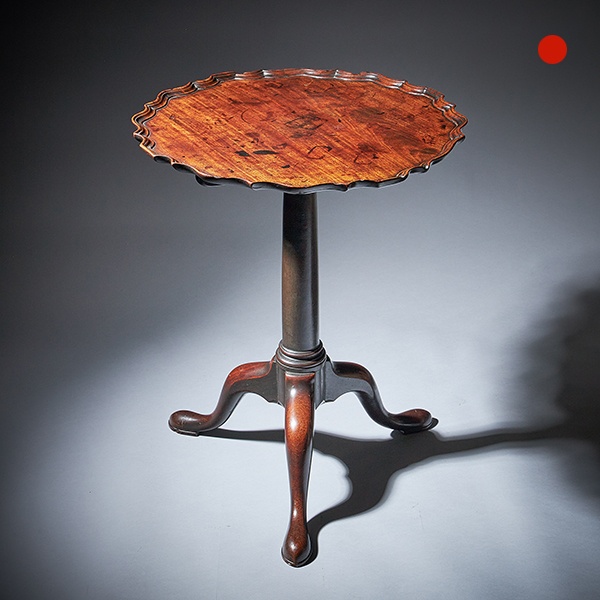
George II Gun Barrel Mahogany Tripod Table, circa 1740-1750
George II Gun Barrel Mahogany Tripod Table, circa 1740-1750 SoldFollow UsGeorge II Gun Barrel Mahogany Tripod Table, circa 1740-1750 George II Gun Barrel Mahogany Tripod table. The well-figured top has a pie crust edge, resting on a gun...

18th Century George I Domed Topped Japanned Chinoiserie Falconry Box
18th Century George I Domed Topped Japanned Chinoiserie Falconry Box, circa 1710 £3,900Follow Us18th Century George I Domed Topped Japanned Chinoiserie Falconry Box, circa 1710 A rare and important Queen Anne - George I japanned chinoiserie...

17th Century William and Mary Olive Oyster Lace Box, Circa 1680-1700
17th Century William and Mary Olive Oyster Lace Box, Circa 1680-1700 £3,900Follow Us17th Century William and Mary Olive Oyster Lace Box, Circa 1680-1700 A fine and rare 17th-century William and Mary period olive oyster lace box of perfect...

18th Century George II Scarlet-Red Japanned Corner Cupboard Att. Giles Grendey
18th Century George II Scarlet/Red Japanned Corner Cupboard, Att. Giles Grendey Follow Us18th Century George II Scarlet/Red Japanned Corner Cupboard, Att. Giles Grendey A fine and rare early 18th century George II scarlet japanned chinoiserie...

Signed Mid 19th C. Edo/Meiji Period Diminutive Lacquer Stacking Cabinet, Japan
Signed Mid 19th C. Edo/Meiji Period Diminutive Lacquer Stacking Cabinet, Japan £5,800Follow UsSigned Mid 19th C. Edo/Meiji Period Diminutive Lacquer Stacking Cabinet, Japan The highly decorated tray in the form of a table frames a series of...

Late Edo Period 19th Century Japanese Pillar Clock, Shaku-Dokei, C. 1820
Late Edo Period 19th Century Japanese Pillar Clock, Shaku-Dokei, C. 1820 £6,500Follow UsLate Edo Period 19th Century Japanese Pillar Clock, Shaku-Dokei, C. 1820 ELEGANT JAPANESE PILLAR CLOCK, 'SHAKU-DOKEI', c. 1820 The very fine 30-hour,...

George II Gun Barrel Mahogany Tripod Table, circa 1740-1750
George II Gun Barrel Mahogany Tripod Table, circa 1740-1750 SoldFollow UsGeorge II Gun Barrel Mahogany Tripod Table, circa 1740-1750 George II Gun Barrel Mahogany Tripod table. The well-figured top has a pie crust edge, resting on a gun...

18th Century George I Domed Topped Japanned Chinoiserie Falconry Box
18th Century George I Domed Topped Japanned Chinoiserie Falconry Box, circa 1710 £3,900Follow Us18th Century George I Domed Topped Japanned Chinoiserie Falconry Box, circa 1710 A rare and important Queen Anne - George I japanned chinoiserie...










